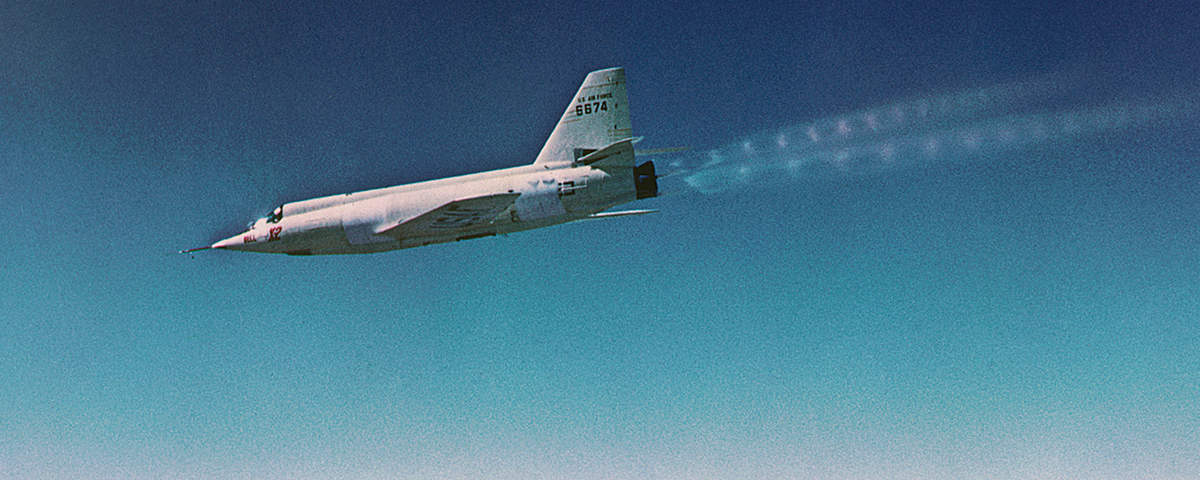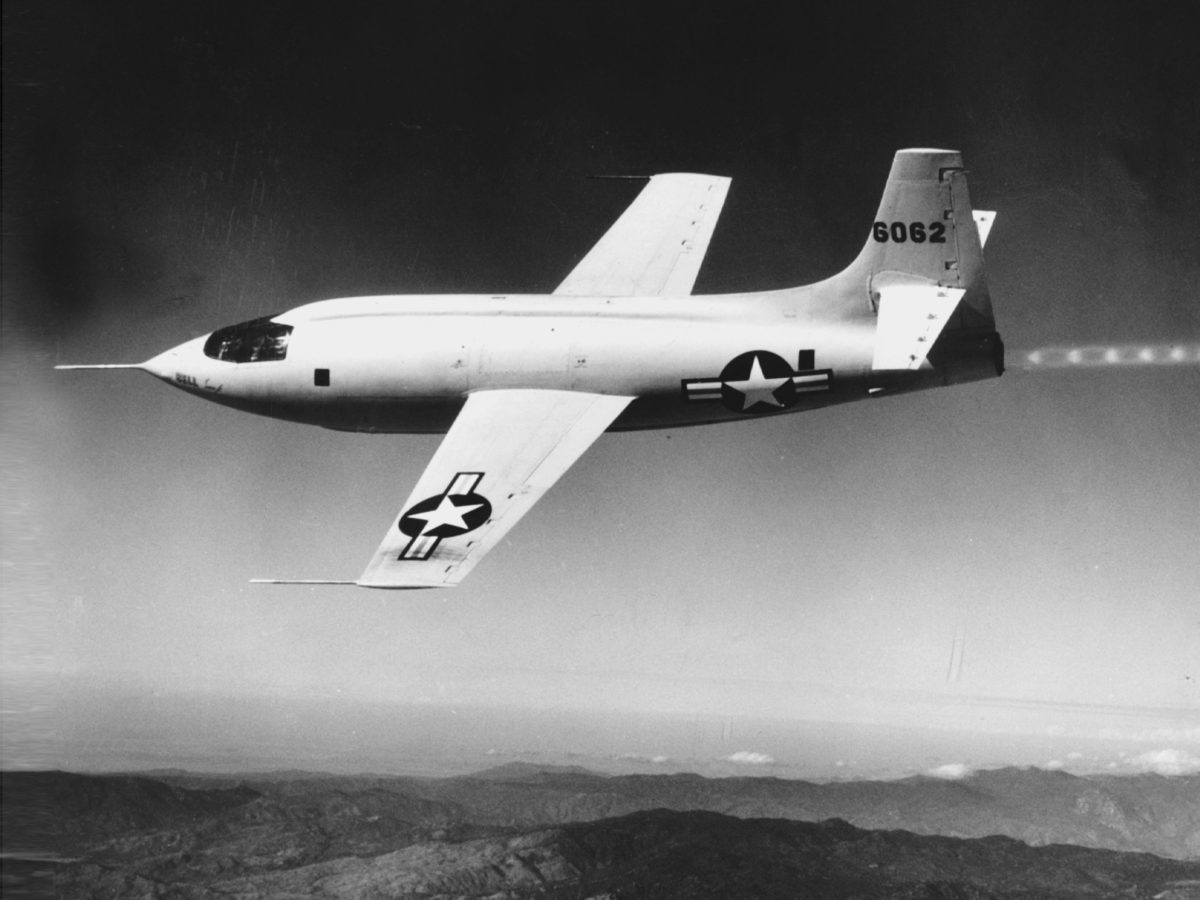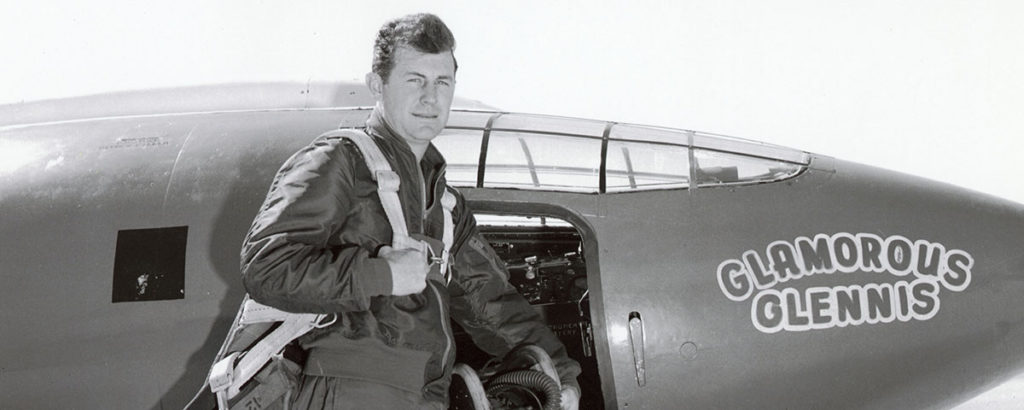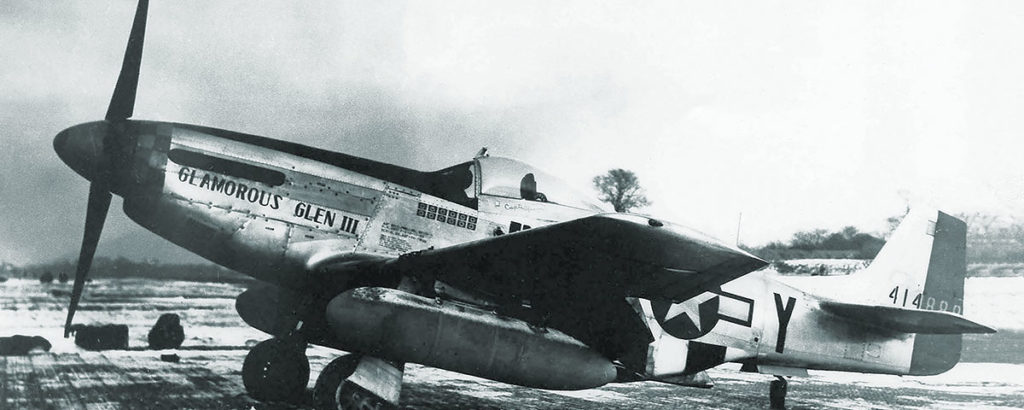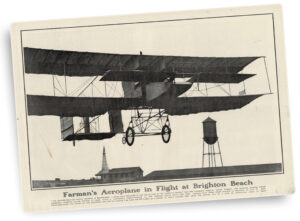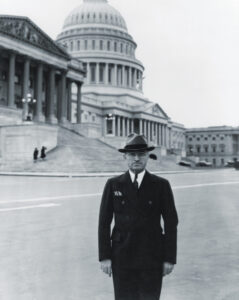The story of Chuck Yeager breaking the sound barrier in a Bell X-1 is well known to aviation enthusiasts and the general public alike. But much of the history of transonic and supersonic flight testing remains relatively obscure.
The X-1 spawned a series of successors, the X-1A through X-1E, which made important research contributions. Bell’s competitor, the Douglas Aircraft Company, received tremendous media attention when its D-558-2 became the first aircraft to surpass Mach 2, with Scott Crossfield at the controls. Meanwhile, Bell went on to develop the X-2 with an eye toward breaching Mach 3.
The X-2’s story is one of triumph and tragedy, deeply intertwined.
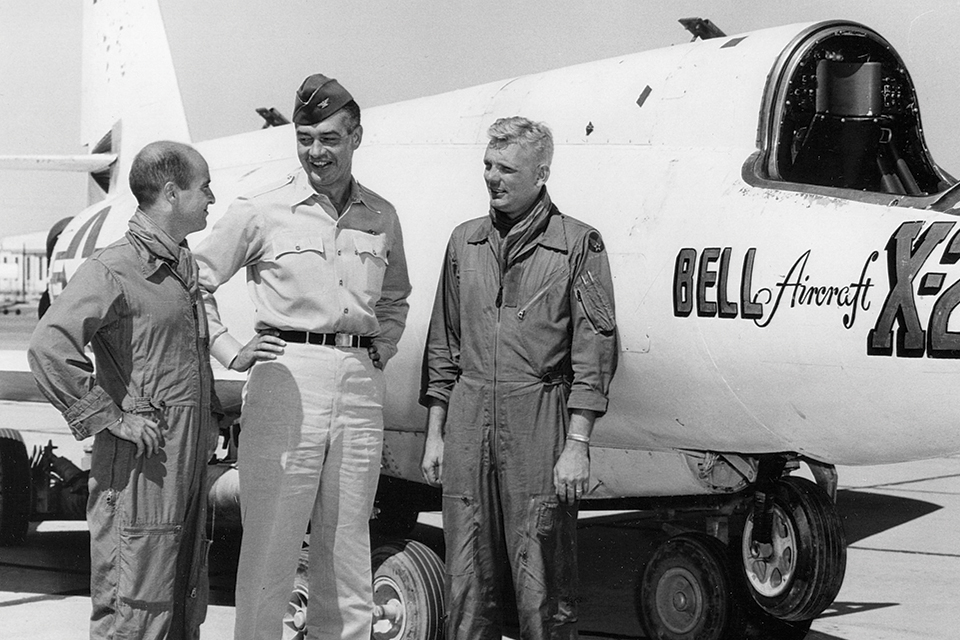
German Engineering
The X-2 program, tasked with building a swept-wing successor to the straight-winged X-1, began in 1945, before the X-1’s first flights. The X-2’s 40-degree swept wing was based in part on research conducted by the Germans toward the end of World War II, which had been reviewed by American aeronautical experts.
The X-2’s overall appearance was similar to that of the D-558-2, but it still retained the distinctive Bell aircraft shape, as if the Douglas aircraft and the X-1 had an offspring. The X-2 fuselage was made of a special copper-nickel alloy called K-Monel, known to retain its strength at the high temperatures predicted at supersonic speeds. (Years later, the hypersonic North American X-15 would make extensive use of a version of this same alloy.) Like the X-1 and the D-558-2, the X-2 would be a rocket plane, air-dropped from a Boeing B-50A mothership. In contrast to the X-1 and the D-558-2, which both used the same rocket motor, the X-2 was powered by the new XLR-25 throttleable rocket engine. This was a turbopump-powered, water/alcohol/liquid-oxygen engine with fuel tanks that could carry significantly more propellant than earlier rocket motors.
Instead of a main landing gear, the X-2 had a steel landing skid and a nose wheel that could not be steered. Fully fueled, the X-2 weighed almost 25,000 pounds. Empty, it weighed only half as much.
GET HISTORY’S GREATEST TALES—RIGHT IN YOUR INBOX
Subscribe to our HistoryNet Now! newsletter for the best of the past, delivered every Monday and Thursday.
Safety Concerns
Recognizing the dangers inherent in high-speed flight testing, the X-2’s designers devised an escape capsule that could separate from the fuselage in the event of an emergency. Once free from the main body of the aircraft, the pilot could jettison the canopy and parachute back to earth — at least in theory.
Two X-2 aircraft were built, designated X-2-1 (serial no. 46-674) and X-2-2 (46-675). The second X-2 actually rolled off the assembly line first. X-2-2 made captured flights below its B-50A mothership and two glide flights.
On May 12, 1953, near Bell’s manufacturing site in Buffalo, New York, it was taken aloft with a plan to test the liquid-oxygen system. During the test, the X-2 exploded without warning, separated from the mothership and fell into Lake Ontario, never to be recovered. The pilot for the scheduled flight that day, Jean L. “Skip” Ziegler, was killed even though he had not yet boarded the X-2 at the time of the explosion. B-50 crewman Frank Wolko was also lost, but the badly damaged mother ship was able to limp back to base and land successfully. It was subsequently replaced with a modified B-50D.
Left with only X-2-1, Bell forged ahead and in 1954 moved the aircraft to Edwards Air Force Base in Southern California. Following captive and glide tests, Frank K. “Pete” Everest made the X-2’s first powered flight on Nov. 18, 1955. In a series of flights during 1955 and 1956, Everest and other pilots including Iven C. Kincheloe steadily pushed the rocket plane toward Mach 3, reaching Mach 2.87 in July 1956. Kincheloe set a new world record for altitude when he took the X-2 up to 126,200 feet in late 1956 (the record would stand until the X-15 program).
Everest had expressed concerns about the ability to control the X-2 at speeds above Mach 2.9, and preferred to simply keep the aircraft straight and level at extremely high speeds until the fuel was exhausted. Only after the X-2 had slowed considerably would he attempt to make flight maneuvers.
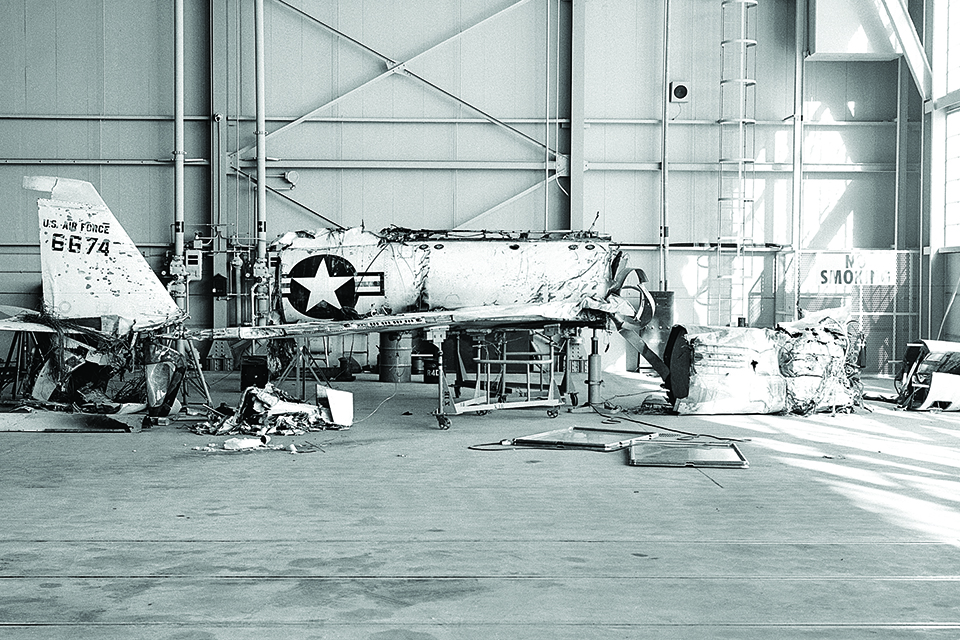
New Pilot
Before the X-2 was scheduled to be transferred to the NACA High Speed Flight Station at Edwards (later known as NASA Dryden and now the Armstrong Flight Research Center), the Air Force requested that another of its test pilots, Milburn G. “Mel” Apt, make a checkout flight in the craft. After an extensive period of training, including in the X-2 simulator, Apt made his first and only flight in X-2-1 on Sept. 27, 1956.
The other test pilots had specifically warned Apt about the X-2’s instability above Mach 2.9. Dropped from the B-50D, the aircraft initially performed as expected. Kincheloe flew chase in an F-100 Super Sabre, giving Apt advice over the radio. Apt flew a perfect flight, but the engine burned for 15 seconds longer than expected, resulting in a record-setting speed of Mach 3.196 (the flight plan had called for a maximum speed of Mach 2.8).
Recommended for you
While still above Mach 3, Apt radioed that he was starting to make a turn. X-2 engineer Richard Day warned him over the radio not to do so, but it was already too late. The high-speed turn resulted in a control divergence known as inertial coupling. Apt’s last transmission was interpreted as, “There she goes.” The X-2 spun out of control, rolling and tumbling violently. The onboard cockpit camera showed that he was knocked unconscious as his head repeatedly hit the canopy.
When the aircraft fell below 40,000 feet, the now-conscious Apt was able to separate the escape capsule and attempted to bail out with his parachute. But Apt was unable to extricate himself in time, and he was killed on impact with the desert floor. The remainder of the X-2 made a relatively soft crash landing, breaking up into three large pieces that were later reconstructed for the accident investigation.
The loss of the last surviving X-2 ended the program. Mach 3 had been achieved, but at a terrible cost.
This feature originally appeared in the May 2019 issue of Aviation History. Subscribe here!
historynet magazines
Our 9 best-selling history titles feature in-depth storytelling and iconic imagery to engage and inform on the people, the wars, and the events that shaped America and the world.


